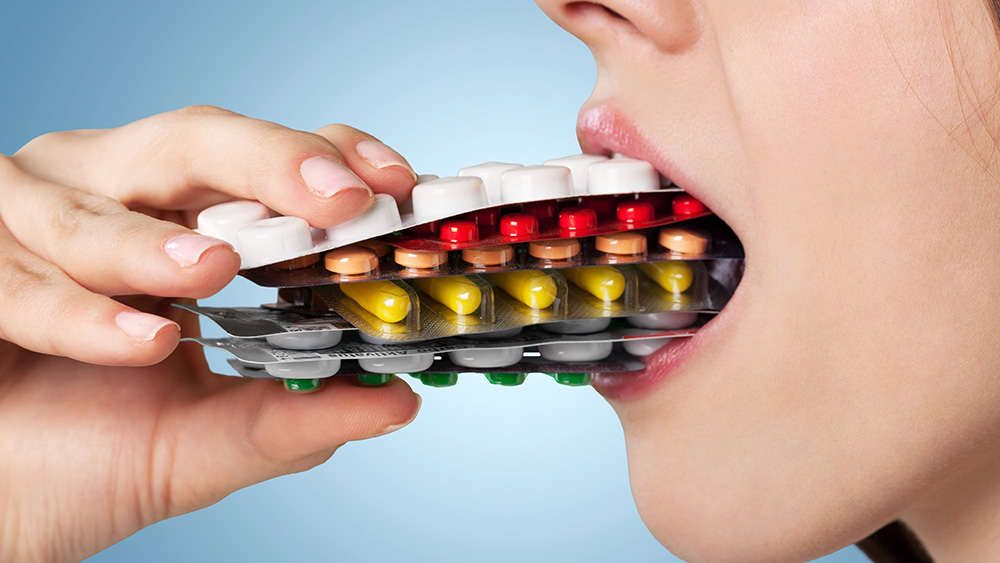Patients taking both drugs should be closely monitored, researchers advised

Concomitant use of selective serotonin reuptake inhibitors (SSRIs) and oral anticoagulants (OACs) in patients with atrial fibrillation was tied to an increased risk of major bleeding compared with OAC use alone, a case-control study suggested.
The population-based study from the U.K. showed that taking an SSRI and OAC (both direct OACs and vitamin K antagonists [VKAs]) together was associated with a 33% increased risk of major bleeding compared with OACs alone (incidence rate ratio [IRR] 1.33, 95% CI 1.24-1.42), reported Christel Renoux, MD, PhD, of Jewish General Hospital in Montreal, and colleagues.
Compared with use of OACs alone, concomitant use of SSRIs plus OACs was linked to a significantly higher risk for several specific types of major bleeding, they detailed in JAMA Network Openopens in a new tab or window:
- Gastrointestinal bleeding: adjusted IRR 1.38 (95% CI 1.24-1.53)
- Intracranial hemorrhage: aIRR 1.56 (95% CI 1.32-1.85)
- Other major bleeding: aIRR 1.23 (95% CI 1.12-1.36)
This elevated risk peaked during the first few months of concomitant treatment (IRR 1.74, 95% CI 1.37-2.22), and persisted for the first 6 months of treatment and finally stabilized around day 150 of use.
“Given that previous studies have shown that SSRIs reduce serotonin content in platelets by 80% to 90% within a period of 2 to 3 weeks, we anticipated that patients most susceptible to bleeding would experience an event shortly after initiating concomitant use of SSRIs and OACs,” Renoux and co-author Alvi Rahman, MSc, of McGill University in Montreal, jointly told MedPage Today. “Ultimately, our findings were in line with our expectations, with the risk of major bleeding being higher within the first 6 months of concomitant SSRI and OAC use.”
While both direct OACs and VKAs individually were linked with bleeding risk, the magnitude of this risk was slightly less with direct OACs (IRR 1.25, 95% CI 1.12-1.40) than VKAs (IRR 1.36, 95% CI 1.25-1.47). That being said, strong potency SSRIs (IRR 1.34, 95% CI 1.22-1.47) and moderate potency SSRIs (IRR 1.31, 95% CI 1.19-1.43) had similar links to bleeding risk.
In light of these findings, clinicians should take measures to mitigate bleeding risk, the researchers advised. “For example, among OACs, direct OACs may be preferred over VKAs as they have lower potential for pharmacokinetic interactions than VKAs,” Renoux and Rahman suggested. “Moreover, to specifically decrease the risk of gastrointestinal bleeding in patients at high risk, proton pump inhibitors may be considered.”
Furthermore, this doesn’t mean either of these drugs should be withheld, they added. “Both are highly effective treatments for their primary indications.”
Joseph E. Marine, MD, MBA, of Johns Hopkins University School of Medicine in Baltimore, who wasn’t involved with the study, commented that patients on both drugs should “prudently” minimize bleeding risk, but also shouldn’t stop or change therapy without consulting their clinician first.
Matthew Tomey, MD, of the Icahn School of Medicine at Mount Sinai in New York City, added that it has been “long known” that SSRIs may be linked with some bleeding risk, “which may relate to their effects on the interplay between serotonin and platelet function,” though the existing data on this have been inconsistent.
While this is an observational study and should be interpreted with caution, he told MedPage Today that “it is perhaps intuitive” that mixing a medicine with inhibitory effects on platelet function may lend itself to greater bleeding tendency in the context of oral anticoagulant use.
“We encounter this challenge regularly when navigating concurrent indications for anticoagulation and antiplatelet therapy, as in the example of the patient with atrial fibrillation and a coronary stent,” added Tomey, who wasn’t involved with the study. “When good reasons exist for both the anticoagulant and the medicine with antiplatelet effect, we often do need to use both, albeit with an awareness of increased bleeding risk and an imperative to take all reasonable measures to mitigate that bleeding risk.”
Overall, the analysis was “a hypothesis-generating study which should support more research to prove this association,” Marine told MedPage Today. “It would have been interesting for the authors to include a falsification test in the study — for example, was there an association between anticoagulants combined with non-SSRI antidepressants and major bleeding?”
For this study, a total of 42,190 atrial fibrillation patients who were hospitalized with major bleeding were matched with over 1.1 million controls. About 60% of both groups were men, and mean age was 74. Patients with major bleeding tended to have slightly higher rates of hypertension (81.8% vs 79% of controls), coronary artery disease (31.4% vs 28.3%), congestive heart failure (21.7% vs 19%), peripheral arterial disease (6.5% vs 5.7%), venous thromboembolism (6.6% vs 5.7%), stroke or transient ischemic attack (19% vs 17.2%), diabetes (25.7% vs 23.7%), a history of bleeding (14.3% vs 9.2%), and anemia (17.4% vs 13.6%), among others.
Men also had a slightly higher bleeding risk (IRR 1.38, 95% CI 1.26-1.51) than women (IRR 1.27, 95% CI 1.15-1.40). When it came to age, only patients ages 60 and older had an elevated major bleeding risk (ages 60-74: IRR 1.32, 95% CI 1.19-1.46; ages 75 and up: IRR 1.33, 95% CI 1.21-1.46).
/2024/01/12/image/jpeg/krd4k7uo1CPXqIy44032YtOs4M44Y6tWEgOsbhY9.jpg)








